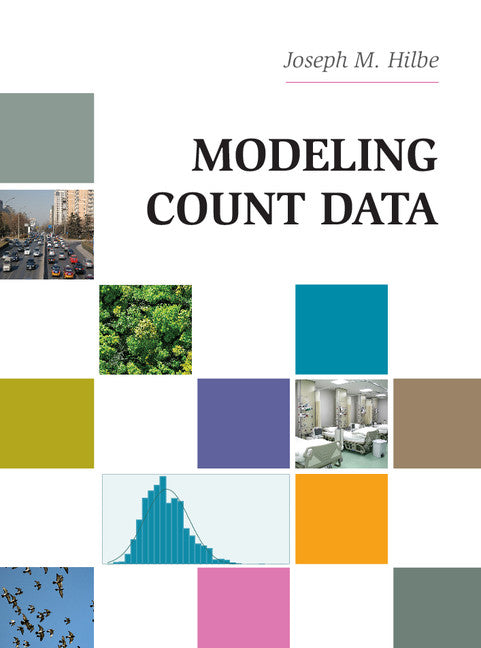Freshly Printed - allow 6 days lead
Couldn't load pickup availability
Modeling Count Data
This book provides guidelines and fully worked examples of how to select, construct, interpret and evaluate the full range of count models.
Joseph M. Hilbe (Author)
9781107028333, Cambridge University Press
Hardback, published 21 July 2014
300 pages, 10 b/w illus. 81 tables
24.2 x 18.2 x 2 cm, 0.66 kg
'Modeling Count Data is a well-organized entry-level book mainly written for applied researchers with little formal theoretical background in statistics who need to analyse count data … Thoroughly worked examples with software code, several of them devoted to applying alternative count models to the same data set, provide a basic guide for model selection among competing models. The chapters are well structured, starting with points of discussion and ending with a brief summary. Where required, section themes are summarized. Also, the formula used, abbreviations used and examples used are summarized in tabular form. In brief, it is a remarkable book and can be used as a practical guide for introducing count data analysis.' Anoop Chaturvedi, Journal of the Royal Statistical Society
This entry-level text offers clear and concise guidelines on how to select, construct, interpret, and evaluate count data. Written for researchers with little or no background in advanced statistics, the book presents treatments of all major models using numerous tables, insets, and detailed modeling suggestions. It begins by demonstrating the fundamentals of modeling count data, including a thorough presentation of the Poisson model. It then works up to an analysis of the problem of overdispersion and of the negative binomial model, and finally to the many variations that can be made to the base count models. Examples in Stata, R, and SAS code enable readers to adapt models for their own purposes, making the text an ideal resource for researchers working in health, ecology, econometrics, transportation, and other fields.
Preface
1. Varieties of count data
2. Poisson regression
3. Testing overdispersion
4. Assessment of fit
5. Negative binomial regression
6. Poisson inverse Gaussian regression
7. Problems with zeros
8. Modeling under-dispersed count data - generalized Poisson
9. Complex data: more advanced models
Appendix A: SAS code
References
Index.
Subject Areas: Data capture & analysis [UNC], Probability & statistics [PBT], Economic statistics [KCHS], Econometrics [KCH], Economics, finance, business & management [K]


